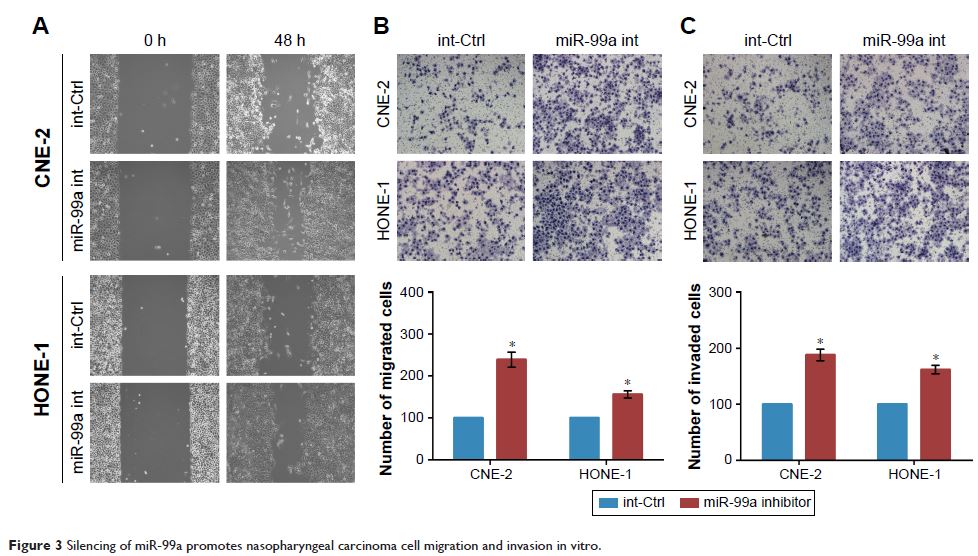9 9 6 5 3
论文已发表
注册即可获取德孚的最新动态
IF 收录期刊
- 3.3 Breast Cancer (Dove Med Press)
- 3.4 Clin Epidemiol
- 2.5 Cancer Manag Res
- 2.9 Infect Drug Resist
- 3.5 Clin Interv Aging
- 4.7 Drug Des Dev Ther
- 2.7 Int J Chronic Obstr
- 6.6 Int J Nanomed
- 2.5 Int J Women's Health
- 2.5 Neuropsych Dis Treat
- 2.7 OncoTargets Ther
- 2.0 Patient Prefer Adher
- 2.3 Ther Clin Risk Manag
- 2.5 J Pain Res
- 2.8 Diabet Metab Synd Ob
- 2.8 Psychol Res Behav Ma
- 3.0 Nat Sci Sleep
- 1.8 Pharmgenomics Pers Med
- 2.7 Risk Manag Healthc Policy
- 4.2 J Inflamm Res
- 2.1 Int J Gen Med
- 4.2 J Hepatocell Carcinoma
- 3.7 J Asthma Allergy
- 1.9 Clin Cosmet Investig Dermatol
- 2.7 J Multidiscip Healthc

MiR-99a 通过靶向 HOXA1 抑制鼻咽癌细胞的侵袭和转移
Authors Wang J, Tang W, Liao M, Liu Y, Ai X
Received 5 November 2016
Accepted for publication 15 December 2016
Published 10 February 2017 Volume 2017:10 Pages 753—761
DOI https://doi.org/10.2147/OTT.S126781
Checked for plagiarism Yes
Review by Single-blind
Peer reviewers approved by Dr Colin Mak
Peer reviewer comments 3
Editor who approved publication: Dr Chiung-Kuei Huang
Background: Recent studies reported that miRNAs play important roles in the
carcinogenesis and progression of nasopharyngeal carcinoma (NPC). Therefore,
further studies are warranted to better elucidate the function and mechanism of
miRNAs in NPC.
Methods: Quantitative reverse transcription-polymerase chain
reaction (RT-PCR) was used to detect the miR-99a expression in NPC cell lines
and tissue samples. Wound healing, transwell migration and invasion, and lung
metastatic colonization assays were performed to determine NPC cell migratory,
invasive and metastatic abilities of NPC cells. Luciferase reporter assays,
quantitative RT-PCR and Western blotting were used to validate the target of
miR-99a.
Results: We found that miR-99a was significantly downregulated
in NPC cell lines and tissue samples. Ectopic overexpression of miR-99a
significantly inhibited NPC cell migration and invasion in vitro, and
suppressed lung macroscopic and microscopic metastatic colonization in vivo.
Conversely, silencing of miR-99a significantly promoted the migratory and
invasive abilities of NPC cells. Furthermore, HOXA1 was validated as a direct target of
miR-99a, and ectopic expression of HOXA1 could rescue the suppressive effect of
miR-99a overexpression on NPC cell migration and invasion.
Conclusion: Together, these results indicated that miR-99a could
inhibit NPC invasion and metastasis by targeting HOXA1 , thus
providing a novel potential target for miRNA-based treatment for NPC patients
in the future.
Keywords: miR-99a, homeobox A1, nasopharyngeal
carcinoma, invasion, metastasis
